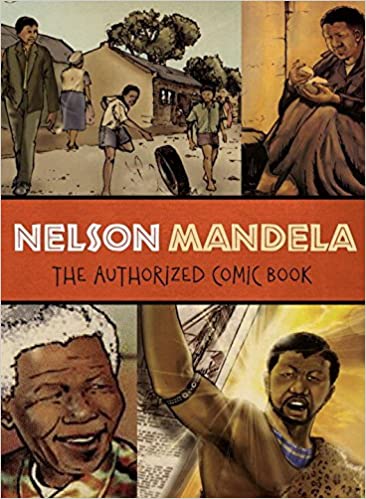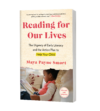By Laila Weir
What?! Use fashion to teach early reading skills? Well, yes. When you’re raising little people, buying clothes is something you have to do a lot. Not only do they outgrow things seemingly overnight, but there are also endless stains, tears, and misplacings to contend with. (Buying them adorable clothes also happens to be fun, at least in my book!)
Raising a successful reader is also an important part of the parenting job—as in, critically important. Research shows that childhood literacy is crucial: Students that can read by third grade are less likely to drop out of high school and less vulnerable to poverty and unemployment later on. Conversely, around 70 percent of U.S. prison inmates operate at the lowest literacy level. Yet, before COVID-19, a national evaluation showed that two-thirds of U.S. 4th and 8th graders weren’t proficient readers. So, parents, it’s up to us to help kids get where they need to be.
In the earliest years, learning the concept that language can be expressed through symbols on paper (or fabric!) is key, along with mastering the ABCs—which takes time and practice. Next up is getting familiar with lots of high-frequency words, and comfortable sounding out simple words—which also takes time and practice. Often, the best way to impart these skills in real, busy life with real, impatient kids is to weave them into other daily activities.
And so we got to thinking. What if we could combine these two foundational and yet seemingly unrelated parts of parenting? And it turns out the answer is a fun, low-stress way to build early reading into your and your kids’ busy days. The key is to look for chances to reinforce letter learning and reading skills while shopping for and dressing your child. (Tip: This works with anything! Words on a cereal box? Letters on traffic signs? Point them out!)
Here are some tips for using fashion to foster phonics (sorry, we couldn’t resist!):
Look for Easy-to-Read Writing
Kids’ T-shirts and other clothing often feature cute phrases, slogans, and even brand names all over them. Look for items that use a font kids can read, not curlicue script. This alone will open up the opportunity to show letters to your child, whether or not the words are anything they’re near ready to master.
Point out the letters to your child, tell them what each is and what sound it makes. Then discuss how the letter is formed—like, “See how you draw a curve to make a C?” or “Look! A line down and a line across makes a T.”—and trace it with your finger. Help your child trace it with their finger, too. Just remember this is best done before they put on the clothes, or when they take them off. Showing them in the mirror won’t have the same effect!
Seek Out Easy Words and Phrases
When possible, also opt for clothing with simple words on it. Even better, scoop up any items with a whole phrase that your child could learn to read. But if that’s not readily available (or it’s not cute, comfy, or quality), look for something that has a few words your child can sound out, or a few high-frequency words your child could start getting familiar with.
Lots of T-shirts and sweatshirts have the words and or the on them, as well as other important words to start recognizing. Some brand names and slogans are also great for beginning readers. (Think: Just do it.)
Then point out the words to your child. Meet them where they are: If they’re just mastering letter sounds, remind them what sounds the letters in question make, and then demonstrate sounding out the words. If they’re a little further along, let them try for themselves, but give them plenty of support and encouragement.
You can read to them any words they can’t read for themselves, tracing your finger along under the words as you go. Even the youngest kids will benefit from learning that these combinations of letters represent words they know and that we read words from left to right.
Repeat, Repeat, Repeat
Ok, so this tip isn’t unique to using fashion to teach your child reading skills. It’s fundamental to our whole approach to raising a reader from day one through … well, forever!
If you can forgive the play on words, Rome wasn’t spelled in a day. It takes a whole lot of repetition to help kids master the alphabet, remember letter sounds, commit letter combinations and spelling rules to memory, and internalize the many common words that strong adult readers have memorized. (Let’s just say that if we had a nickel for every time we repeated to what seemed to be deaf ears “Remember, a silent E makes a long vowel,” we’d treat you all to a back-to-school shopping spree.)
So repeat the lessons every time your child wears a readable outfit (or you do!), and stay patient. Even the millionth time your sweet little thing reads “make” as “mack.” They’ll get there—with your help.
Get Clothes You Can Write On
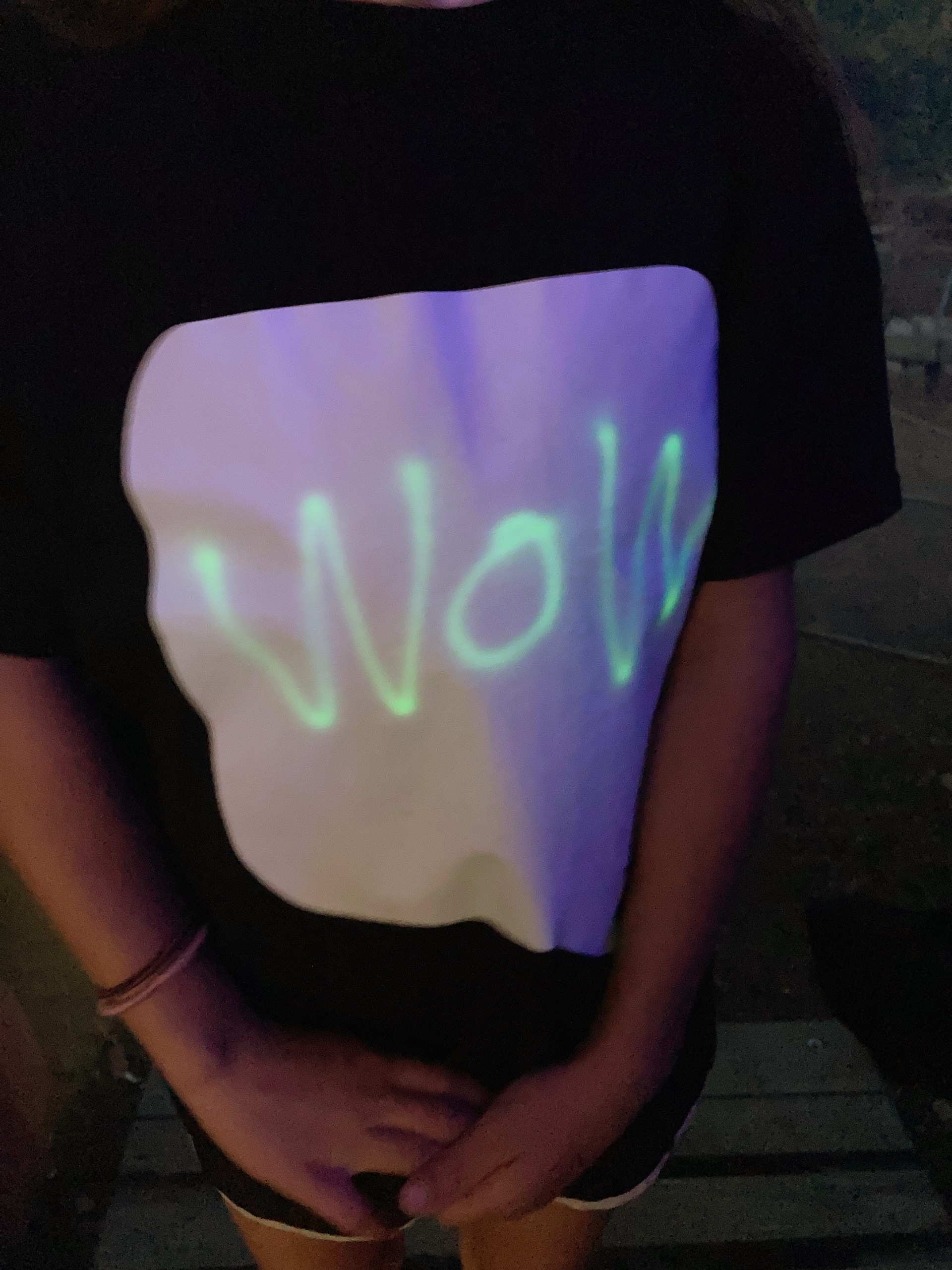
Various small vendors sell T-shirts with a blank patch you can “write” on using a pen light. The writing shows up great in the dark, then fades away, so you can use it over and over. These make a super fun novelty gift that’s sure to keep the wearer and their friends entertained at any sleepover or campout! Just don’t forget to encourage them to practice writing their name, and to learn to write simple messages. Wow! Yes! and Fun! would be perfect, easy places to start.
You can also find “write-on-me” T-shirts with blank spaces or speech bubbles intended for adding a permanent message of your own, which are an easy starter version of our next tip…
Make Your Own
Why not craft your own ABC hats or spelling words T-shirts, too? Craft stores are full of colorful blank clothing items, fabric markers, and fabric paint. If you can’t find just the right fashion for raising your reader, go ahead and make your own!

Invite your beginning writer to join in the fun, too. As they get older, you can help them stencil favorite quotes from books onto their creations, like this adorable Harry Potter quote shirt. (Tip: Book-quote T-shirts also make great gifts.)
We hope this post will inspire you to keep reading skills top of mind as you shop for your kids this year.
How else are you weaving reading skills into life with littles? Let us know in the comments, or connect with us on social media!
It happened on a Thursday afternoon. I was watching a friend’s two children for the day: eight-year-old Topher and his five-year-old sister, Elizabeth. Topher was helping me set up lunch on the back porch and Elizabeth had gone inside to get her doll. As Topher and I came back inside to grab juice boxes, I noticed the house had become quiet. Too quiet. The kind of quiet that all parents and teachers know. That kind of quiet can only mean one thing—trouble.
I found Elizabaeth in the bathroom. She stood next to the bathtub, into which she had cracked six eggs and emptied an entire bottle of orange shampoo. My mouth fell open.
“Elizabeth, what happened?” I cried.
“It’s okay Ms. Chrysta,” she replied. “It’s for science. It’s supposed to be messy.”
And you know what? She was right. Science should be an exploration, and children should be passionate to try and build, experiment, and innovate. But rather than ever having to clean raw eggs out of my tub again—and to save you from a similar fate—I’ve curated a list of some of the most awesome Science, Technology, Engineering, and Mathematics (aka STEM) books for young children around.
Whatever piques your child’s interest and stirs their scientific thinking—be it Legos, computer games, outer space, or cracking eggs in a tub—support their STEM learning with a great book. And maybe a mop.
As a parent and educator, I’m always on the lookout for kids’ books that not only entertain but also teach and inspire. Hispanic Heritage Month is a good time to introduce young readers to stories that celebrate the rich culture and history of Hispanic and Latinx communities. The U.S. observes National Hispanic Heritage Month from September 15 to October 15. Seize the moment with this list of Hispanic heritage children’s books for all ages, from board books to YA titles.
Whether through playful adventures, touching family stories, or inspiring journeys, all these stories allow Hispanic and Latinx children to see themselves in the characters and settings, fostering a sense of pride and identity. They also give other children a chance to learn about a wide array of countries and cultures. So head to your local bookstore or library and then curl up with your kids to dive into these vibrant tales filled with heart, humor, and adventure.
Hispanic Heritage Board Books
Picture Books for Hispanic Heritage Month
Hispanic Heritage Young Adult Books for Tweens
There are few better books to teach children about the importance of teamwork, resilience, and discipline than the true-life stories of legendary Olympians. Whether you’re gearing up for two weeks of cheering on your country or basking in the inspiration afterwards, we curated a list of picture books celebrating unforgettable Olympic moments and exploring the history of the Games. Learn about athletes who broke racial barriers, shattered records, and went on to extraordinary lives of service post-retirement. These inspiring picture books will have your little ones dreaming big!
Bonus:
I scream, you scream, we all scream, “Ice cream!” And, if you’re like me, you might also be screaming for a break from the summer heat. However, I still want to make indoor play fun, creative, and, if possible, educational. Enter scoop sentences!
When kids are learning to read, they can begin to identify sentences by capitalization and punctuation. Yet, when they begin to write and construct their own sentences, it can be difficult to know what a sentence needs. This super fun reading activity helps children learn how to build a sentence (or words for younger kids) by incorporating one of summer’s greatest joys—ice cream!
Just follow the simple instructions below.
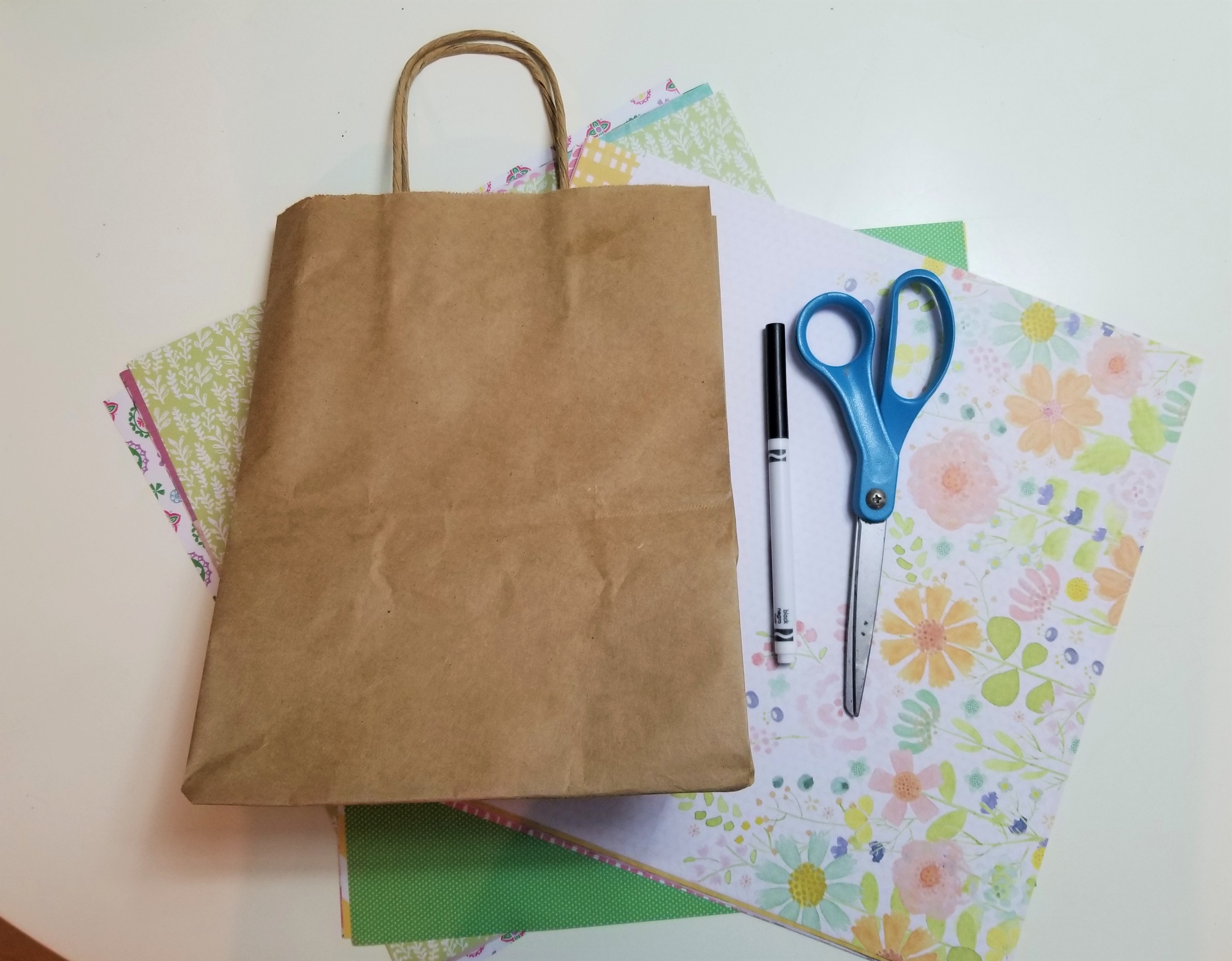
Materials
- Several different types of colorful or patterned paper or cardstock
- Paper bag or cardboard
- Scissors
- Markers
- An awesome book about ice cream (optional)
- Cup (optional)
Cost: $10 for paper or cardstock
Start with Story Time: Introduce your ice-cream-themed reading activity by coming inside from the heat and enjoying a picture book about ice cream with your child. Great choices include Ice Cream Summer by Peter Sis, Should I Share My Ice Cream? by Mo Willems, What Can You Do With a Paleta? by Carmen Tafolla, and Shave Ice in Hawaii illustrated by Mariko Merritt. (There are also a plethora of cookbooks you can use to learn how to make your own ice cream.) As you read, point out a few of the sentences.
Step 1: Draw the shapes of two ice cream cones onto the paper bag or cardboard, then cut them out. (It’s good to make two so that you can play along with your child.)

Step 2: Draw scoops of ice cream on various colors of paper, as in the picture below, then cut them out. You should make about 20, so your sentences will have some variety.
Tip: If drawing isn’t your strongest skill, you can also just trace a cup to make circles and use those as your scoops.
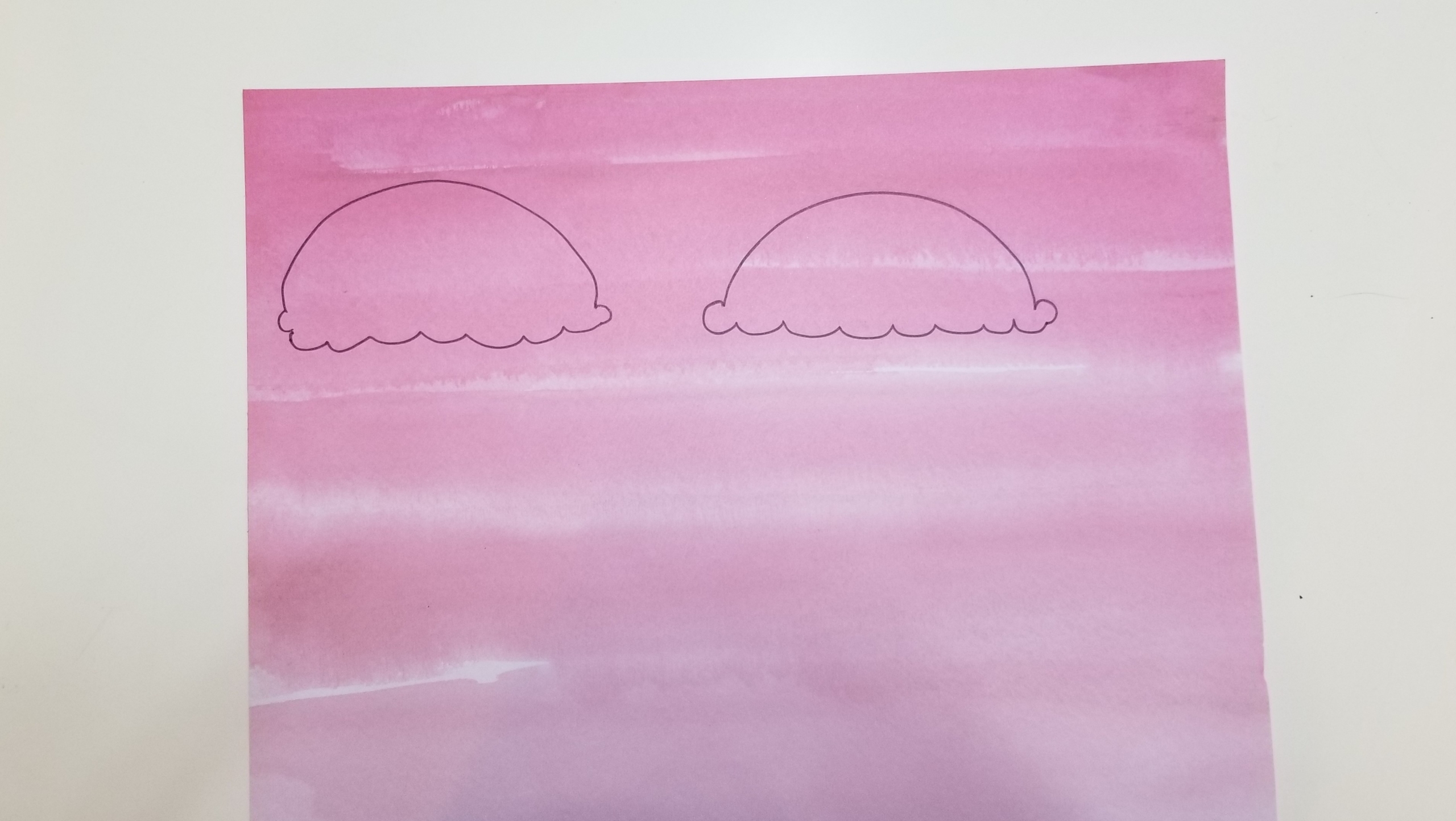
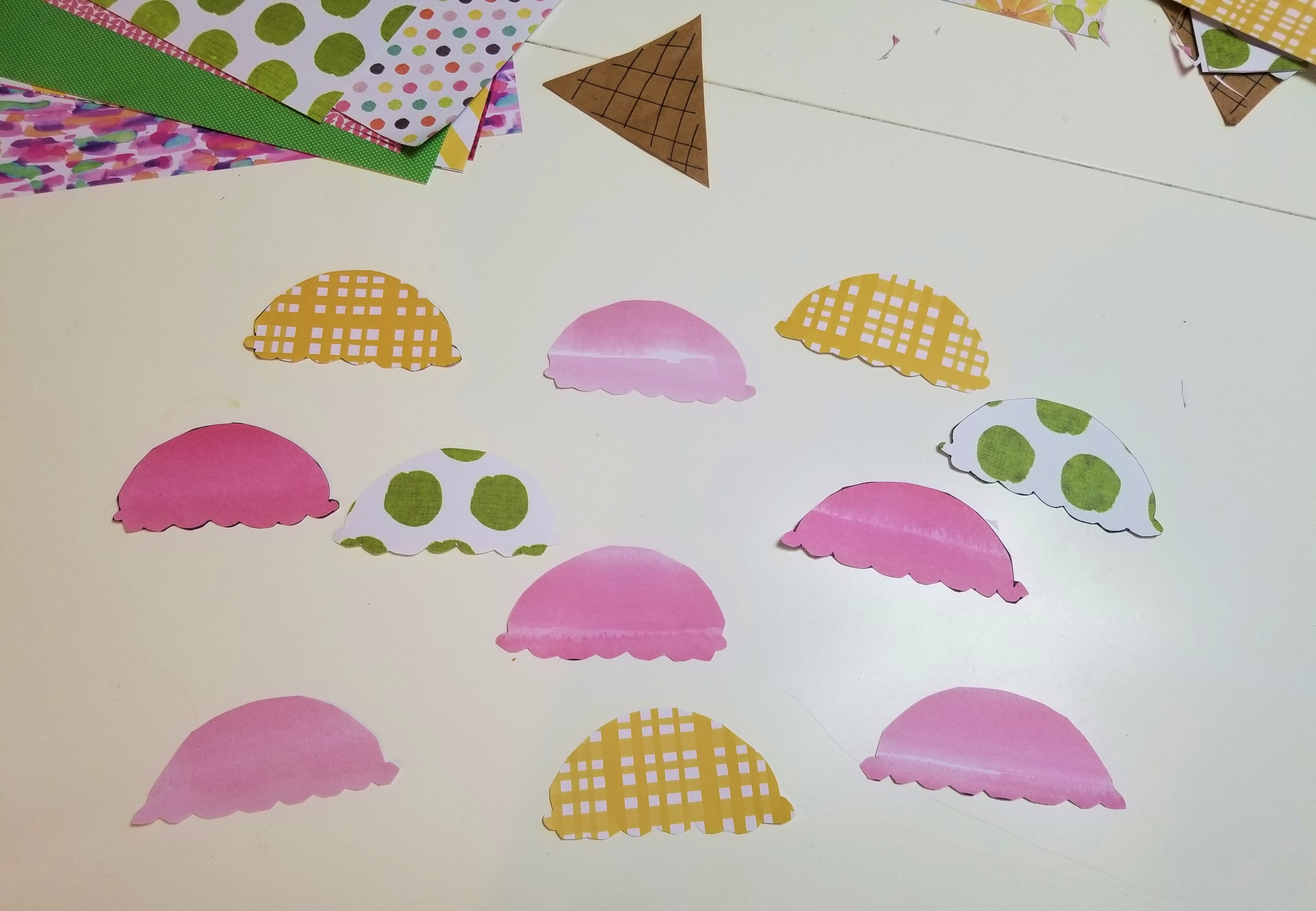
Step 3: On each scoop, write a single word. Choose a variety of nouns (e.g., dragon, cake, alien, ocean), verbs (e.g., sings, flies, slithers), conjunctions (e.g., and, but, so), prepositions (e.g., to, on, behind), articles (the, a), adjectives (e.g., red, slimy, fuzzy) and adverbs (e.g., quickly, slowly, loudly). Let your child help you come up with the words and write them down.
Optional: If you like, you can put different types of words on different types of paper. For example, put all your verbs on pink paper, all your nouns on patterned papers, etc.

Step 4: Mix up the scoops and place them in front of your child. Let them create a sentence with the word scoops they like best. Here is a great opportunity to guide them on what makes a sentence and what doesn’t. Gently help them add words until they have a full sentence. Once they have made a sentence, read it, pretend to eat it, and start again!
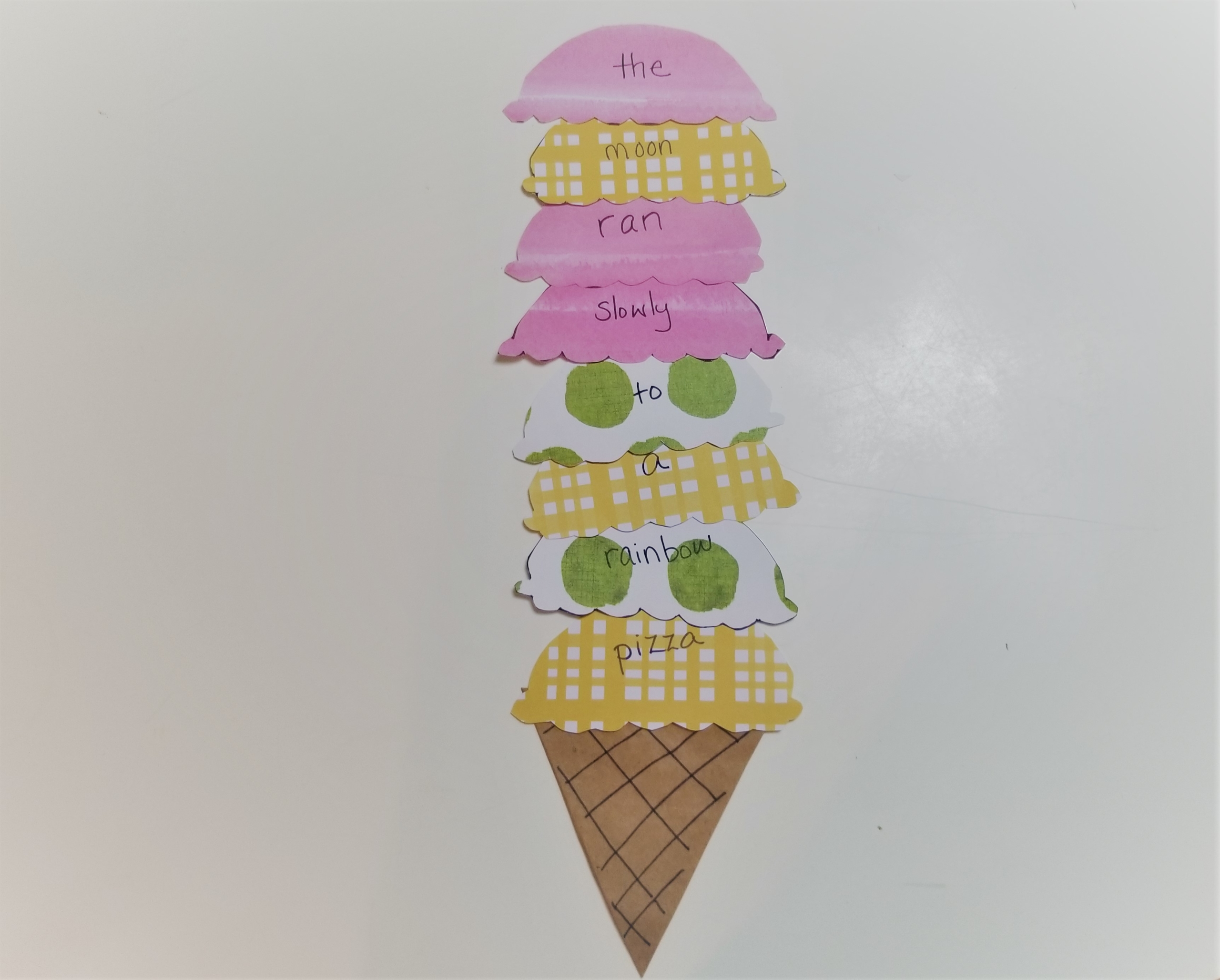
Now you have a delicious and super fun reading activity that you can play with over and over! Extend the activity by setting up different challenges: What’s the longest sentence they can make? The silliest? The shortest? There are so many combinations to make.
Adaptation for younger children: If you have a younger child, write individual letters on the scoops and try to build an ice-cream word instead!
We highly recommend rewarding yourself with some ice cream at the end too. And I wouldn’t be mad if you saved me a scoop of mint chocolate chip.
What sentences was your family able to create? Share your sentence creations with us!
The World Series is more than an elite sporting competition. It’s also a moment to indulge in the timeless joys of the ballpark—the crack of the bat, the roar of the crowd, the thrill of the game. And you can channel some of that ballpark excitement into your story time with these children’s picture books for the World Series season.
Whether your child is already a die-hard baseball fan or just discovering this classic pastime, these books offer up great stories for your shared reading. They capture the action on the field and tell powerful stories of perseverance, teamwork, courage, and history. From tales of real-life legends to imaginative fly-ball fantasies, we think these baseball-themed picture books hit it out of the park.
Have you ever flipped through a picture book and thought, Wow—this art is incredible!? If you’re reading to a small child, chances are the illustrations are what pull them in to a new book first.
This post looks at several black illustrators who create impactful and visually stunning picture books that are essential features of today’s children’s literature landscape. These artists aren’t just adding beauty to books. They’re expanding how stories are told, how children see themselves, and how kids understand others. These black illustrators bring a variety of art styles and personalities to the world of picture books.
Let’s meet them!

Christian Robinson’s paper-cut art style brings warmth and joy to every page. His work often centers black children in everyday moments and imaginative journeys, making his books both relatable and magical. Robinson illustrated the award-winning Last Stop on Market Street, which received the Newbery Medal, a Caldecott Honor, and a Coretta Scott King Illustrator Honor. He is also the author-illustrator of You Matter and Another. I highly recommend Milo Imagines the World for any child with an unstoppable imagination.
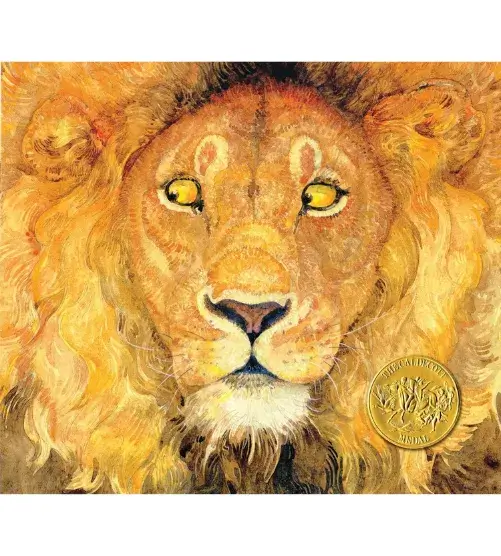
Jerry Pinkney was a legendary black illustrator and author whose rich, detailed watercolor paintings brought timeless stories to life. Over his prolific career, he illustrated more than 100 books, many of them focused on classic fairy tales and folk tales reimagined with cultural depth and sensitivity. His wonderful works include The Lion & the Mouse, which earned him the Caldecott Medal, and The Talking Eggs and John Henry, both Coretta Scott King Honor books. Pinkney’s lush, expressive style and deep respect for oral storytelling traditions made his books enduring favorites. Through his work, generations of children have experienced familiar tales through a lens that honors African American heritage.

Erin K. Robinson is a dynamic artist whose bold, expressive style highlights identity, imagination, and glee. Her mixed-media illustrations—layering digital techniques with hand-drawn textures—radiate energy and emotion. Drawing on her background in fashion design, she creates characters that shine with personality. Robinson’s picture books often center black girlhood and feature empowering themes, as seen in The Magical Snowflake, A Library, and This Hair Belongs to Me. (Read more about the authors of these books in 11 Brilliant Black Female Authors You Should Be Reading With Your Kids).
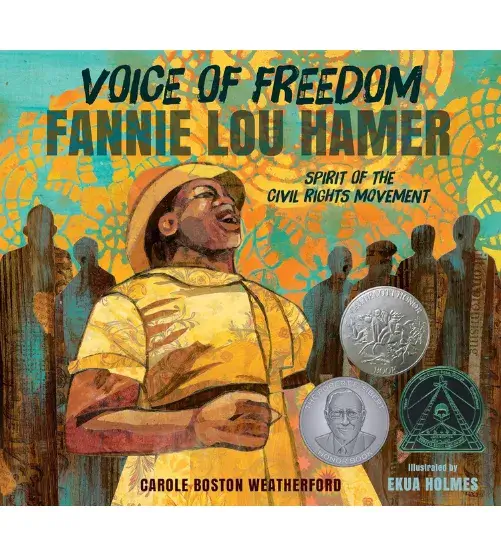
Ekua Holmes uses her textured collage work to explore ancestry, memory, and place. Her illustrations blend paper, photographs, and color to build layered visual stories rooted in family and history. Holmes has illustrated acclaimed books such as Voice of Freedom: Fannie Lou Hamer, Black Is a Rainbow Color, and Hope Is an Arrow, each grounded in cultural storytelling and lived experience.
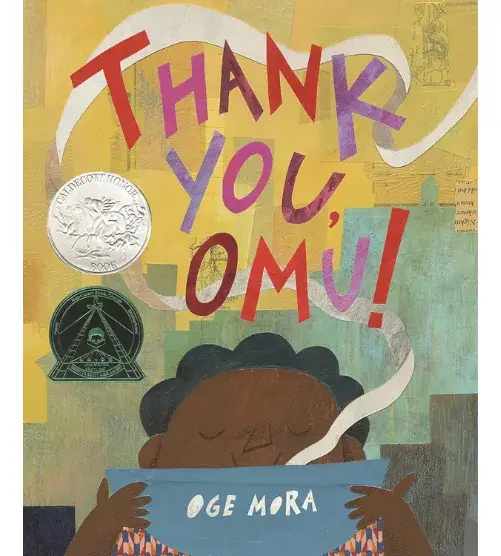
Oge Mora is a black picture book illustrator who uses collage-based artwork for her stories. Her debut, Thank You, Omu!, earned a Caldecott Honor and the Coretta Scott King/John Steptoe New Talent Award. Mora’s follow-up, Saturday, explores the bond between a mother and daughter navigating an unexpected day. She also illustrated The Oldest Student: How Mary Walker Learned to Read and Everybody in the Red Brick Building, each showcasing her layered visual storytelling.
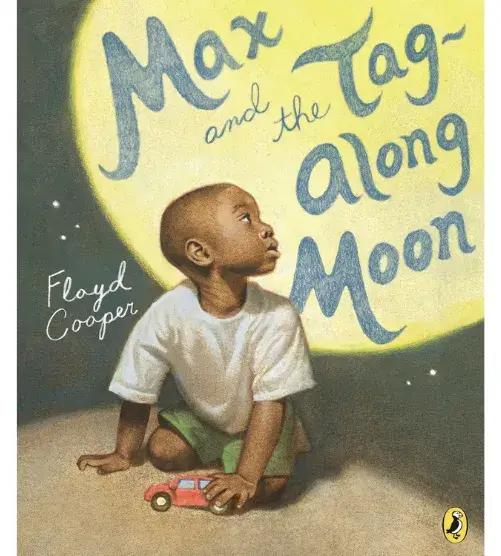
Floyd Cooper illustrated more than 100 books with his distinctive “subtractive” oil erasure art technique. His illustrations brought African American history and everyday life to the page, honoring culture, family, and lived experience. Cooper often centered young black boys, capturing moments of tenderness, wonder, and black boy joy—as seen in Max and the Tag-Along Moon, A Beach Tail, and Frederick Douglass: The Lion Who Wrote History. His work invites children to see themselves reflected with care and pride, making history and personal stories feel close and real. Through his art, Cooper left a lasting legacy that continues to shape how children’s books reflect beauty, heritage, and the richness of black childhood.

Dapo Adeola is a British-Nigerian illustrator who rose to prominence with the Rocket series, including Look Up! and Clean Up! (written by Nathan Bryon), following a science-loving girl with big dreams and a fearless spirit. Adeola’s illustrations capture humor and pluck with warmth and clarity. He also created Hey You!, a picture book featuring messages of pride and self-love from black creatives across publishing. Additionally, Adeola is also a strong advocate for equitable recognition of illustrators in the industry.

Vashti Harrison is an author, illustrator, and filmmaker whose soft, luminous illustrations have redefined how young readers engage with history and identity. Her Little Leaders series—including Little Leaders: Bold Women in Black History and Little Legends: Exceptional Men in Black History—blends biography and portraiture to introduce children to black changemakers. (Also available in board book form for your littlest readers!) Harrison’s trademark art style combines expressive faces, gentle lines, and historical detail, inviting readers to feel connected and inspired. She also illustrated Hair Love, the picture-book adaptation of the Oscar-winning short film.

Lauren Semmer is an illustrator whose bright art practically jumps off the page. Her illustrations shine in To Boldly Go by Angela Dalton and The ABCs of Black History by Rio Cortez—both favorites for families who want to raise proud, thoughtful kids. Semmer’s work uplifts black culture and identity in a way that’s both beautiful and easy for little ones to connect with. Whether it’s a message of hope or a celebration of heritage, her books feel like a high-five to young readers. For parents looking to add powerful, positive books to their shelves, she’s a must-know.

Kadir Nelson’s gorgeous illustrations often depict black figures with dignity, strength, and grace. This has made him one of the most influential visual storytellers in contemporary picture books. His work combines classical composition with striking realism, creating visuals that command attention and emotion. Nelson has illustrated acclaimed books such as Heart and Soul, We Are the Ship, Henry’s Freedom Box and If You Plant a Seed, and is the recipient of multiple Coretta Scott King Awards, Caldecott Honors, and the Sibert Medal.

Vanessa Brantley-Newton uses vibrant, mixed-media illustration to celebrate diversity, creativity, and confidence. She illustrated the bestselling book The King of Kindergarten and fan-favorite Mary Had a Little Glam, among many others. Each book showcases her signature flair for pairing playful storytelling with bold, stylish visuals. Brantley-Newton often features sassy, self-assured black girls who embrace their individuality and shine on the page. Through her illustrations and narratives, she opens doors for all children to feel seen, adding flair and fun to every bookshelf.

Brian Pinkney is an award-winning black illustrator whose vivacious, swirling illustrations bring movement and rhythm to children’s books. The son of legendary artist Jerry Pinkney, he continues a powerful legacy in the world of black picture-book illustrators. Pinkney often collaborates with his wife, author Andrea Davis Pinkney, on acclaimed titles such as Duke Ellington, The Adventures of Sparrowboy, and Sit-In: How Four Friends Stood Up by Sitting Down. His use of scratchboard, combined with lovely watercolor, gives his artwork a sense of motion and dynamism. His newest release, The Littlest Drop, was his final collaboration with his late father.

Loveis Wise is a black illustrator whose dreamy, colorful artwork feels like a burst of imagination on every page. Their work often features flowing shapes, delightful characters, and nature-inspired themes that invite kids to think big and feel seen. You’ll find their vibrant style in books like The People Remember by Ibi Zoboi and Magnolia Flower, an adaptation of a Zora Neale Hurston story by Dr. Ibram X. Kendi. Wise’s illustrations center black children in ways that feel empowering, calm, and full of wonder—all while keeping little readers totally engaged. Whether you’re looking for books that reflect your child’s world or open new ones, Wise’s art offers a beautiful addition to any family library. For parents wanting picture books that uplift and inspire, Loveis Wise is one to watch.
For parents seeking to teach their children about history through the true stories of people who’ve worked to shape it for the better, it’s hard to imagine a more inspiring subject than anti-apartheid activist, South African president, and Nobel prize winner Nelson Rolihlahla Mandela. With Mandela’s birthday on July 18, introduce your kids to this towering figure of modern history through these picture books produced by Mandela himself and the Nelson Mandela Foundation.
Long Walk to Freedom by Nelson Mandela, Abridged by Chris Van Wyk
“Essential reading for anyone who wants to understand history—and then go out and change it.” That’s how President Barack Obama described Long Walk to Freedom, Nelson Mandela’s autobiography, much of which Mandela wrote in secret while imprisoned.
This picture book adaptation of the book for young readers delivers beautifully engaging illustrations along with accessible text. It’s pitched for middle-elementary readers but is well adapted for reading aloud to somewhat younger children, who will particularly connect with the early parts of the story depicting his childhood and schooling. The book is long, so if you read it with your child, treat it as you would a chapter book, sharing one part of the story at each reading—but the large-scale illustrations on each page and easy language keep it firmly within the grasp of younger readers and listeners.
Just remember: This book deals with the real-life experiences of a freedom fighter and political prisoner. While this book is specially adapted for kids, parents are always wise to pre-screen content and exercise caution with sensitive children, particularly in the second half of the book, where, for example, a (non-gory) illustration of the 1960 Sharpeville massacre shows people lying on the ground surrounding police with guns.
Nelson Mandela: The Authorized Comic Book by The Nelson Mandela Foundation and Umlando Wezithombe
This large-format graphic novel features gorgeously detailed illustrations by the Umlando Wezithombe collective of South African artists. It tells the story of Nelson Mandela and South Africa over the course of 193 pages. It’s aimed at middle school readers, and the action-filled drawings and speech-bubble style are sure to draw in even more reluctant readers.
Younger readers will also find the comic-strip illustrations engaging and should be able to connect with the book as well; even younger kids will enjoy seeing the pictures and having segments of the text read aloud to them. Again, parents of younger and sensitive children will want to review the content for themselves: This is written for older kids and doesn’t shy away from history. As above, the beginning of the book, covering Mandela’s childhood, is a good opening to begin sharing this story with younger listeners.
Nelson Mandela’s Favorite African Folktales
This volume brings together a collection of 32 classic, and some newer, African folktales selected by Nelson Mandela. Each magical, mystical, and mythical tale is accompanied by a whimsical, colorful illustration. Kids of all ages who enjoy fairytales and folklore (and which don’t?) will be drawn in, hooked from the opening tale, an East African story that celebrates the clear vision of children and casts them as the heros to adults mesmerized and blinded to reality.
The tales are a perfect length to share one or a few for a quick story time or bedtime reading. Or make a cup of tea and snuggle up for a longer cuddle: Once you get to reading and examining the pictures together, your child may not want you to stop! Tip: Don’t shy away from adding plenty of dramatic flair to your reading. These stories were meant to be told aloud. So really listen as you read (put that mental to-do list on hold!) and let yourself get lost in the lyrical magic of the ages. And then let that magic come through in your voice. Your child won’t be able to resist.
Even the brief and beautifully written introduction by Mandela is worth reading aloud. “It is my wish that the voice of the storyteller will never die in Africa, that all the children in the world may experience the wonder of books, and that they will never lose the capacity to enlarge their earthly dwelling place with the magic of stories,” Mandela concludes.
That’s our wish, too.
“Won’t my child learn to read in kindergarten?”
That’s the question on many parents’ lips when faced with advice to teach reading skills to their small children. Sure, children will develop their reading ability in kindergarten and throughout the rest of their education, but the truth is that most of the underlying skills they need for full literacy develop way before then. And, sadly, reading instruction in the U.S. fails most kids.
So don’t wait until they go to kindergarten or even preschool to intentionally impart key early literacy skills your children will need to thrive in formal schooling. The great news is that, with the right information, you don’t need lots of time to teach what they need to know—and it can and should be fun! Even some of the simplest things can help your child develop reading skills early on. (For example, see How to Maximize the Benefits of Reading Aloud to Your Kids for some easy tweaks that will make a big difference.)
This is where educational games come in! There are many fun board games that help teach reading skills—without hours of instruction or practice. We’ve narrowed down the list for you to our top five best literacy-building board games for children five and under. So go ahead and get in some laughs and quality time connecting with your little one (or ones), and help them get kindergarten-ready at the same time! Then consider leaving the games available for your child even when you aren’t: More often than not, kids can play with these titles independently or with another child and still benefit from them.
Teach Reading Skills with these Fun Board Games
Tall Tales is a storytelling game recommended for ages three and up. There’s no reading required in this game, but it helps kids build early literacy skills by fostering imagination and important oral language skills. From a young age, most children understand the wonder of hearing a story and love to make up their own. This game allows them to do so. (Related: See our post on How to Use Storytelling to Build Joy, Connection, and Literacy with Kids.)
Sequence Letters is a letter matching game for kids ages four to seven. One letter of the alphabet is on each card in both uppercase and lowercase, and the child playing matches the letter with the beginning sound of a picture. This is a great way for kids to practice sounding out letters and making connections between images and words.
Boggle is already a well-loved game, and now your young kids under five can join the fun by playing Boggle Jr. It’s a great fit for kids three and up who have already begun learning the letters of the alphabet. There are two levels of play so the game can grow with your child. Younger children can play with the letter cubes and practice matching the letter shapes with the picture word cards. And when your little one is ready for more of a challenge, they can play the second level of the game, which creates opportunities to sound out short, simple words.
Bob Books Happy Hats Board Game
This game is designed for beginning readers ages four and up, and is made by the creators of Bob Books, a series featuring sparse illustrations and simple, decodable words. In our household, we’re currently using Bob Books to teach our preschooler early literacy skills—and they’re the same books I learned to read with when I was a preschooler, as well! This game is highly rated by parents and allows the player to create more than 16o words.
Zingo Word Builder is perfect for kids about five years old, or younger children who have already developed early literacy skills and are ready to learn more. This game allows the player to build vocabulary and reading skills by challenging them to create three-letter words. There are two levels of play for this game, which makes it perfect for beginning readers and more skilled readers, as well.
Designed for kids 4 to 9 years old, This goofy game teaches children to read common words as they compete to be the first kangaroo to get some pizza. What’s really nice about this game is that there are three levels with increasingly difficult words. This means the game can grow with your kids, and it also means that if you have multiple children at different reading levels, they can still play together, each with their own personal set of challenges. Another fun aspect is that the players can compete against one another OR you can play a cooperative mode, where everyone works together. The flexibility and fun is really what puts this game on the list. And, after all, shouldn’t reading be fun?
Over recent years, fidget toys, especially pop fidgets, have become incredibly popular, and you’ve probably seen them everywhere! The Fidget Game cleverly combines the fascination of pop fidgets into the practice of learning high-frequency or “sight” words. The game includes word cards for pre-K to 3rd grade, so you can tailor the game to your child’s specific reading level. You can support your little one’s reading journey while having fun with colorful pop fidgets and spending bonding time together. Your child learns to read, and you both get to enjoy the experience.
If you’re familiar with the best-selling game Bananagrams, you’ll love the small-child version, My First Bananagrams. It has lowercase, color-coded tiles that brilliantly adapt it for little ones, promoting early literacy in a playful manner. The game’s simplicity keeps the kindergarten set engaged, fostering vocabulary and spelling skills about as effortlessly as is possible. The vibrant colors and tactile experience enhance the overall enjoyment. It’s a delightful way to bond with your children while witnessing their language skills blossom. Highly recommended for both educational and family entertainment.
Bonus: If your family enjoys playing board games together, check out our tutorial on making your own personalized DIY alphabet board game!
No matter what stage your child is in when it comes to reading skills, using games as a way to help develop early literacy can be really successful for many children (and lots of fun!).
Like this post? Share it!



